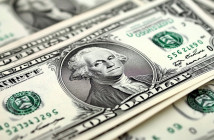The dollar strengthened on Wednesday, lifted by rising Treasury yields, though the pound gained against the greenback after British inflation stayed above 10% in March adding to pressure on the Bank of England to keep raising rates.
The dollar index, which tracks the currency against a basket of its peers, was up 0.108% as markets turn more skeptical that the Federal Reserve will cut rates later this year.
The yield on two-year Treasury notes, which are sensitive to expectations for the U.S. central bank’s monetary policy, was up 3.8 basis points to 4.237% after earlier hitting a one-month high.
“This is a temporary reprieve for the dollar,” said Bipan Rai, North America head of FX strategy at CIBC Capital Markets in Toronto.
“We still think that over the medium- to long-term that the dollar is going to continue to come under considerable amounts of pressure. And that’s tied to our view that the Fed is probably going to hike one more time and then that’s it.”
Futures pricing show an 85.4% chance the Fed will hike rates 25 basis points when policymakers conclude a two-day meeting in two weeks, according to CME’s FedWatch Tool. But the likelihood of a rate cut by December has narrowed considerably this week.
The dollar has been on the defensive for some time with the debt ceiling in Congress unresolved and the migration of deposits in the U.S. banking system still a concern, Rai said.
Sterling was last trading at $1.2452, up 0.23% on the day, while the dollar against the rate-sensitive yen rose 0.24% at 134.41, after briefly poking above 135 for the first time in a month.
A “risk off” mood that helped the dollar in early trading was felt across markets, with European and U.S. stocks struggling alongside assets like non-yielding gold.
“Risk sentiment turned negative during the European morning session, with zero- and low-yielding assets taking the brunt of the sell-off as bond yields have continued to extend their recovery,” said Fawad Razaqzada, market analyst at City Index.
“It looks like UK’s 10%+ CPI reading was the culprit. This has revived worries that interest rates will remain high for longer in the UK – and Europe.”
Wednesday data showed British consumer price inflation eased by less than expected in March to 10.1% from February’s 10.4%, meaning Britain has western Europe’s highest rate of consumer inflation.
Expectations for higher official rates in a market relative to those elsewhere typically drag money market and government bond yields higher, attracting cash into a country while boosting its currency at least in the short term.
Deutsche Bank on Wednesday revised up expectations for British rates to include two more 25 basis point rate hikes from the Bank of England. Morgan Stanley now predict one, with a risk of a second.
The pound also strengthened a little against the euro, with the common currency down 0.2% to 88.12 pence.




